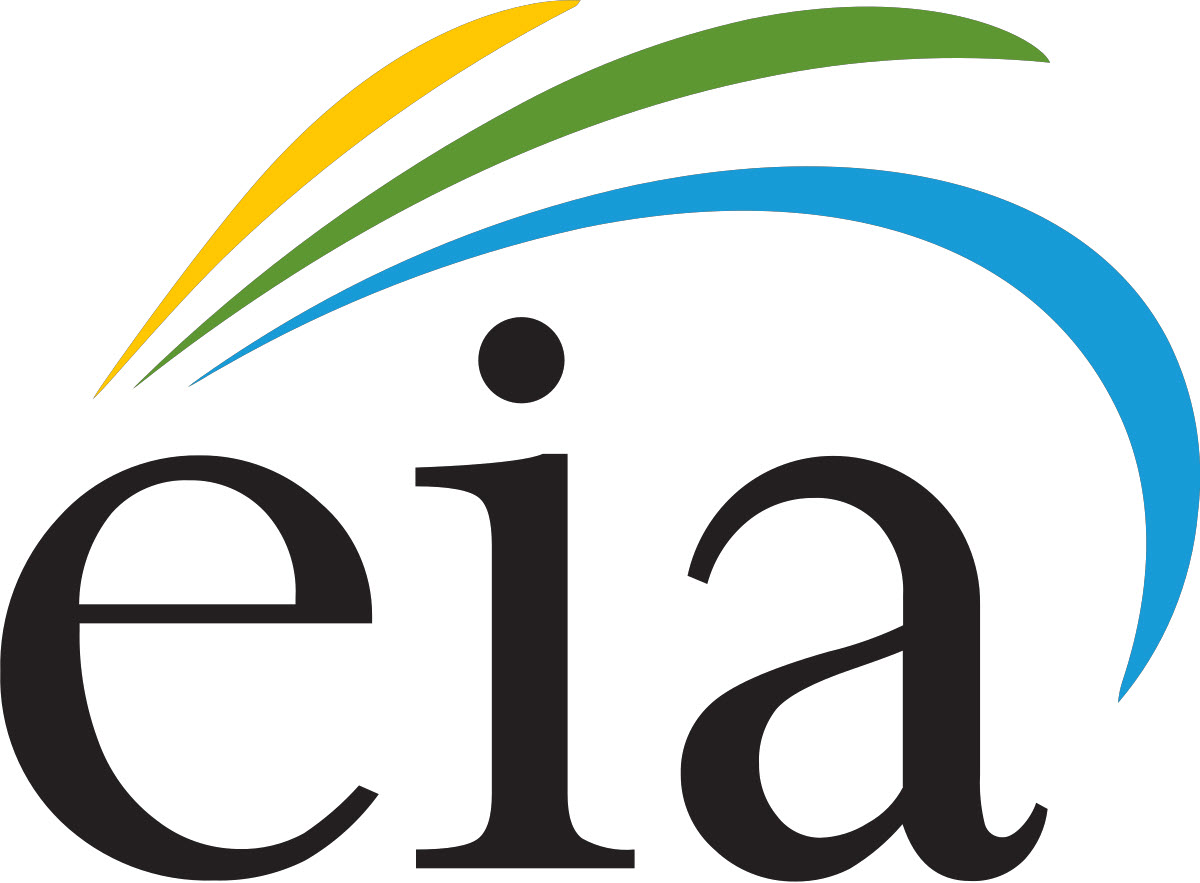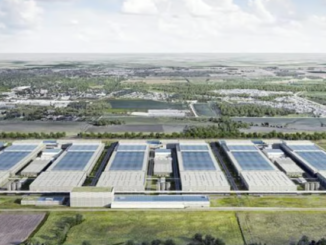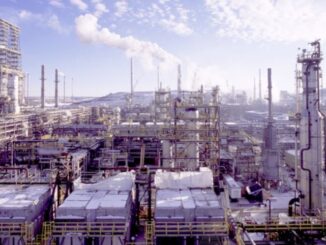
Energy News Beat Publishers Note: With this development in the need for lithium and the availability in the oil fields in Alberta, will that help the Biden Administration re-think the Keystone Pipeline? Just reaching, thinking, and hoping.
Global demand for lithium is trending upwards due to the increasing need for energy storage solutions and the growing electric vehicle industry. Large batteries, such as those in electric vehicles, require a significant amount of lithium, creating a large market for the product.
Notwithstanding the COVID-19 pandemic, electric vehicles are becoming increasingly common. As they become cheaper, battery capabilities improve, and concerns over climate change increase, demand for electric vehicles, and their lithium components, is expected to accelerate. On a global scale, it is expected that by 2025, electric vehicles will account for 10% of passenger vehicle sales, rising to 28% in 2030, and 58% by 2040. As Alberta recovers from the COVID-19 pandemic, the decreased demand for oil and gas brought on by the pandemic and the collapse in commodity prices, Alberta is looking for ways to diversify its economy and take advantage of lithium as a new and exciting industry.
Why Alberta?
This growing demand presents a major opportunity for Alberta. Alberta’s oil fields hold large deposits of lithium in subsurface brine. This subsurface lithium-brine has long been overlooked as industrial waste from oil field operations. Now, technologies known as direct lithium extraction (DLE) are being developed to access Alberta’s lithium-brine potential in many of the same reservoirs as Alberta’s existing oil and gas resources. These recent advancements position Alberta to become a major lithium producer. In addition, Alberta already possesses an abundance of existing geological data and infrastructure to access such reservoirs and has a highly trained workforce that can help capitalize on its lithium production potential.
Notably, the Government of Alberta (Province) flagged lithium production as one means of diversifying the economy. On June 17, 2019, Alberta’s Minister of Energy (Minister) spoke, during legislative debates, about the importance of encouraging investment in lithium production. She emphasized the desire to attract companies and innovation to the province by taking steps to make Alberta the most competitive jurisdiction for lithium production in North America.
As set out in the Province’s Recovery Plan, Alberta is committed to establishing a new mineral strategy to capitalize on Alberta’s lithium. On September 23, 2020, the Province announced the establishment of the Mineral Advisory Council to provide strategic advice, guidance, and recommendations on a Minerals Strategy and Action Plan for Alberta. The Mineral Advisory Council recently completed stakeholder consultation and round table meetings to:
- contribute to the development of the Mineral Strategy and Action Plan for Alberta;
- explore regulatory options for Alberta’s metallic and industrial minerals sector; and
- review and modernize metallic and industrial minerals tenure arrangements.
Following the conclusion of this stakeholder engagement process on February 3, 2021, the Mineral Advisory Council is set to review submissions and meeting results and complete its mandate by advising on Alberta’s Mineral Strategy and Action Plan, as well as on associated policy and regulatory options. The completion of the Mineral Advisory Council’s mandate and the release of the Mineral Strategy and Action Plan is expected to provide insights with respect to potential next steps for lithium stakeholders which could help contribute to Alberta’s lithium production potential.
The establishment of the Mineral Advisory Council is a positive step for the Alberta lithium industry considering that while Alberta has extensive experience with natural resources and minerals, its regulatory regime does not currently contemplate the production and development of lithium. As discussed below, changes to the existing regulatory regime are required to facilitate the development and production of Alberta’s lithium.
Although rapidly changing, this article discusses:
1. Alberta’s current mineral extraction regime.
2. Potential changes to the tenure permitting regulatory scheme pursuant to the Metallic and Industrial Minerals Tenure Regulation (MIM Tenure Regulation) to better accommodate lithium.
3. Changes required to the Metallic and Industrial Minerals Royalty Regulation (MIM Royalty Regulation).
4. The potential role the Alberta Energy Regulator (AER) and its existing directives, legislation, and regulations could play for lithium production.
5. Saskatchewan’s regulatory regime regarding lithium-brine production to provide comparisons and potential insights to Alberta’s developing lithium industry.
Alberta’s Mineral Extraction Regime
Alberta’s Mines and Minerals Act (MMA) governs the management and disposition of rights in Crown-owned mines and minerals. This includes exploration, development, and operation activities, as well as the levying and collecting of bonuses, rental, and royalties. The MMA is jointly administered by Alberta Energy, Alberta Environment and Parks, and the AER.
Pursuant to the MMA, minerals are defined as all naturally occurring minerals, excluding certain surface-related sand, gravel, clay, and peat. This definition appears to encompass lithium as a mineral that is subject to the mineral extraction regime of the MMA. As such, lithium produced from Alberta’s oil fields falls within prescribed regulations enabled under the MMA, including the MIM Tenure Regulation and the MIM Royalty Regulation.
Amendments to the MIM Tenure Regulation
Amendments to the MIM Tenure Regulation would facilitate the industry’s growth. One potentially helpful amendment is to extend the first assessment work period for permits issued under the MIM Tenure Regulation. Another is to expressly include expenses related to the development of extraction technologies as qualified expenditures for the purposes of calculating minimum spending requirements on assessment work.
Currently under the MIM Tenure Regulation, a permit may be granted for the exploration of subsurface metallic and industrial minerals and for the removal of minerals for the purposes of testing. Such permits are granted for a 14-year term which is divided into successive two-year periods with the first period starting at the commencement of the permit. During each two-year period, a permittee must meet minimum spending requirements on assessment work in order to maintain their permit in good standing. These minimum spending requirements are $5 per hectare for the first period, $10 per hectare for the second and third periods, and $15 per hectare for the fourth, fifth, sixth, and seventh periods.
Since lithium-brine in Alberta is of a low-grade and comes from sizeable reservoirs, lithium producers must acquire permits over large areas to ensure that any future lithium production endeavours are financially feasible. Given that permits are required over large areas and the industry in Alberta is just emerging, some lithium producers could find it challenging to meet per hectare spending requirements during their initial exploration and testing phases. By extending the first two-year assessment period under the MIM Tenure Regulation, lithium producers would be given more time to scale up their exploration and testing capacities at the lower $5 per hectare rate before having to pay higher amounts in subsequent assessment periods. This extension would likely help support the budding lithium industry as it becomes properly established. It would give producers more time, and a better opportunity, to meet minimum spending requirements as they undertake activities such as repurposing existing oil and gas infrastructure for more extensive lithium-brine testing.
Another helpful amendment to the MIM Tenure Regulation is to expressly include expenses related to the development of mineral extraction technologies as qualified expenditures for the purposes of calculating minimum spending requirements. This change would allow lithium producers to allocate expenses related to the development of brine-based lithium extraction technologies to the $5, $10, and $15 per hectare minimums.
While the MIM Tenure Regulation currently gives the Minister the power to extend a two‑year assessment work period, this power is discretionary and is subject to a requirement that an application for extension be submitted by the permittee on or before the last day of the assessment work period in question. Amendments extending the assessment work periods for lithium and expressly including technology development expenses and expenditures would help facilitate a longer work period required for Alberta lithium extraction.
Possible Amendments to the MIM Royalty Regulation
To date, there is no definitive royalty rate for lithium under the MIM Royalty Regulation. The MIM Royalty Regulation establishes four different royalty rates for minerals based on the method used to recover the mineral and the type of mineral extracted:
- the metallic minerals royalty;
- the placer minerals royalty;
- the quarriable minerals royalty; and
- the salt royalty.
The issue to be determined is whether lithium falls into one of these four existing royalty categories or whether an entirely new category should be created.
Lithium could fall under the metallic minerals royalty due to the MIM Royalty Regulation’s broad definition of what constitutes a metallic mineral. A metallic mineral includes all minerals except for placer minerals, quarriable minerals, salt, petroleum, oil, asphalt, bituminous sands, oil sands, natural gas, coal, and ammonite shell. However, when brine-based production processes are considered as the method used to recover lithium, then the salt royalty arguably may also apply. Salt is defined within the MIM Royalty Regulation as a chemical compound, other than water, that is formed by a chemical reaction between an acid and a base, is soluble in water, and includes a mineral extracted in salt form. This definition is analogous to lithium brine, making the salt royalty regime another possible candidate.
Another solution is to create a lithium-specific royalty within the MIM Royalty Regulation. A royalty specific to lithium gives industry stakeholders clarity and certainty. As is the case with the placer minerals royalty and the quarriable minerals royalty, the lithium royalty could be tailored to a specific type of lithium extraction process. Including language in the regulation specific to brine-based lithium extraction would provide lithium producers with guidance on the royalty rate that they could expect to apply to lithium produced in Alberta from subsurface brine.
A lithium specific royalty would not only provide clarification from a definition perspective, but would also allow for rate formulas suited to the specific methods of extraction and operation Alberta lithium producers are most likely to use. Developing rate formulas specific to lithium extraction and operation methods in Alberta would help ensure that Alberta is an attractive and competitive jurisdiction for lithium producers. However, it will be important for the Province to consult with experts and lithium producers to understand potential revenues and costs of operation to aid in developing a rate formula which will adequately both encourage investment and provide royalty revenue for the Province.
For the purpose of the metallic minerals royalty, a leased substance is defined as a metallic mineral recovered pursuant to an agreement issued by the Minister granting rights to such metallic mineral, and includes a product or by-product obtained by processing or reprocessing the metallic mineral. If similar language was applied in a lithium specific royalty section of the MIM Royalty Regulation, lithium producers holding leases or licences would be required to pay the applicable lithium royalty. In terms of the royalty rate that would apply to lithium products produced through different stages of processing, it is expected the rate would be uniform with deductible costs varying pursuant to the Minister’s discretion. As is the case with the metallic mineral royalty, the Minister may specify costs incurred when determining mine mouth revenue and may specify costs incurred, including processing costs, when determining net revenue for the purposes of calculating royalties. Consequently, if a similar type of royalty was used for lithium, then subject to the Minister’s discretion, the royalty amount payable by lithium producers could be individualized to account for processing costs, depending on what stage the lithium reaches in each producer’s production process before it is sold.
Amending the MIM Royalty RegulaWith this development in the need for lithium and the availability in the oil fields in Alberta, will that help the Biden Administration re-think the Keystone Pipeline? tion to include a lithium specific royalty would not be an entirely unprecedented action by Alberta. On May 13, 2020, the Province announced a royalty rate specific to helium, another mineral cited in its June 2020 Recovery Plan, as a resource the province is looking to leverage. The royalty rate specific to helium was implemented through amendments to the Natural Gas Royalty Regulation. The amendments made for the helium specific royalty rate are a positive step towards Alberta’s development of a more diversified energy industry. Amending current regulation to provide a lithium specific royalty rate would likely provide similar results to establish and facilitate diversification.
The Role of the AER in the Alberta Lithium Industry
Pursuant to the Responsible Energy Development Act (REDA), the AER is responsible for providing efficient, safe, orderly, and environmentally responsible development of energy resources in Alberta. It is also responsible for the disposition and management of lands, the protection of the environment, and the conservation and management of water within the context of energy and natural resource activities. These responsibilities are carried out by the AER in accordance with energy resource enactments such as the Oil and Gas Conservation Act (OGCA), and in accordance with certain sections of specified enactments such as the MMA, the Environmental Protection and Enhancement Act and the Water Act.
(a) Possible Amendments to the REDA and to the MMA
For the purposes of the REDA, an energy resource is defined as any natural resource within Alberta, aside from hydro energy, that can be used as a source of any form of energy. Therefore, lithium extracted in Alberta likely qualifies as an energy resource falling under the responsibility of the AER.
One option to facilitate the development of Alberta’s lithium industry is to amend the REDA and the MMA to expressly expand the AER’s jurisdiction for the purpose of creating directives, rules, codes, standards, or guidelines for lithium production. As a specified enactment under the REDA, the AER is currently only responsible for matters under Part 8 of the MMA which governs the exploration of energy resources. If concurrent amendments were made to both the REDA and the MMA to expand the AER’s responsibilities beyond exploration to include other responsibilities relating to the construction and operation of lithium production wells and facilities, the potential effect would be a more clearly defined legislative and regulatory scheme for lithium in Alberta.
(b) The AER’s Role Through Existing Legislation, Regulations, and AER Directives
While certain AER directives, and legislative and regulatory provisions under the OGCA and the Water Act, appear to give the AER a regulatory role in the development of the lithium industry, further regulatory and legislative amendments are required. Examples of some of these changes are discussed below.
Currently under the REDA, the AER is responsible for matters under the Water Act related to energy resource activities. Within the context of lithium production, pertinent Water Act provisions include the definition of a “water well” and “groundwater”. A water well is defined as a drilled opening in the ground that is used for the production of groundwater for any purpose, or obtaining data on groundwater, and includes any related equipment, buildings, and structures. Groundwater is defined as all water under the surface of the ground. Considering these two definitions, and the AER’s specific responsibility for matters under the Water Act, brine-based lithium extraction processes could fall within the scope of the AER’s responsibilities.
A further look into regulations under the Water Act reveals that pursuant to the Water (Ministerial) Regulation, saline groundwater is defined as water that has total dissolved solids exceeding 4000 milligrams per litre. According to Schedule 3 to this regulation, while such saline groundwater will require approval, it is exempt from licence requirements under the Water Act.
As a result, the permitting process for water wells producing saline groundwater could be addressed under the Well Licence Applications process included in AER Directive 056: Energy Development Applications and Schedules (Directive 056). Directive 056 contains the requirements for licence applications to construct or operate facilities, pipelines, or wells. It describes requirements and expectations for licensees to ensure appropriate participant involvement, audit, and technical requirements are followed for energy developments. While approvals or licences from other government agencies may be required outside Directive 056’s licensing process, Directive 056 encompasses the legal requirements of all licensees under the Oil and Gas Conservation Rules (OGCR) and other regulations stipulated by the AER.
Since brine-based extraction processes for lithium in Alberta are expected to produce water with total dissolved solids far in excess of 4000 milligrams per litre, lithium production in the province using water wells could be subject to Directive 056. Water wells related to brine-based extraction processes could be classified as “Other” or “OTH” wells under section 7.8.6 of Directive 056 and, accordingly, receive a licence pursuant to section 2.020 or 2.040 of the OGCR. In addition to these water wells, any wells used for the injection or disposal of produced brine water in brine-based lithium extraction processes could be classified as Class II wells under Directive 051: Injection and Disposal Wells – Well Classification, Completions, Logging, and Testing Requirements and would be subject to the applicable requirements included in the directive.




1 Trackback / Pingback
Comments are closed.